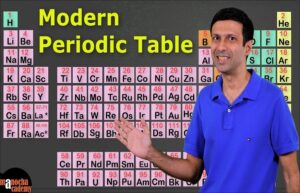Period 3 elements in the periodic table consist of eight elements: sodium, magnesium, aluminium, silicon, phosphorus, sulphur, chlorine, and argon. The following are some brief descriptions of the period 3 elements in the periodic table.
Sodium is a very reactive metal; its sources are rock salt, salt mines and seawater, and it is obtained by electrolysis of molten common salt. It is a soft metal tha t has a low density. Magnesium is important in plant and animal life; it is reactive but less than sodium. Aluminium is the most abundant metal; the sources are bauxite and alumino-silicate rocks. It is hard as magnesium but less reactive.
t has a low density. Magnesium is important in plant and animal life; it is reactive but less than sodium. Aluminium is the most abundant metal; the sources are bauxite and alumino-silicate rocks. It is hard as magnesium but less reactive.
Silicon is a metalloid and has a diamond structure. Phosphorous is a non-metal, solid, reactive, widely distributed in the Earth’s crust; it is an essential constituent of cell protoplasm, the nervous system and bone. Sulphur is a yellow solid which is moderately reactive; it occurs near volcanoes, hot springs, natural gas and petroleum. Phosphorus, sulphur and chlorine are typical non-metals in particular, and they do not conduct electricity. Argon is a noble gas; it is chemically unreactive and exists as separate atoms.
Major Trends across Period 3 Elements (Sodium to Argon)
Across a Period, the following trends can be seen:
Atomic number increases. Atomic size (radius) decreases. There is a decrease in metallic character; sodium and magnesium are metals, for example, while sulphur and chlorine are non-metals. There is a decrease in reducing power and a corresponding increase in oxidising power; for example, sodium is a relatively good reducing agent, whereas chlorine is a powerful oxidising agent.
Na(s) – e– → Na+ [oxidation = loss of electrons]
Sodium is a reducing agent.
CI + e– → C1– [electron gain = reduction]
Chlorine is an oxidising agent.
The elements on the left of the Period take part in metallic bonding and ionic bonding by transferring electrons to non-metals. The elements on the right of the period participate in ionic bonding by gaining electrons from metals; covalent bonding by sharing electrons with other non-metals. Differences in the chemistry of the elements of a period arise from differences in the number of electrons in the valence or outer shells of the atoms of the elements.
Oxides of Period 3 Elements
Aluminium, magnesium, and sodium oxides are all ionic oxides. Their high melting temperatures and electrical conductivity when molten are explained by this. Silicon dioxide has a macromolecular structure like a diamond and a high boiling point. The electronegative difference between the element and oxygen is small towards the other end of the period, resulting in a simple covalent molecule structure with low melting and boiling temperatures.
The acid-base properties of the oxides are also linked to their structure. The oxides of the electropositive elements are very basic and form alkaline solutions.
Na2O(s) + H2O(l) → 2Na+(aq) + 2OH–(aq)
MgO(s) + H2O(l) → Mg(OH)2
The amphoteric nature of aluminium oxide can be seen from its reactions with hydrochloric acid and sodium hydroxide.
Acting as a base: Al2O3(s) + 6HCl(aq) → 2AICI3(aq) + 3H2O(l)
Acting as an acid: Al2O3(s) + 2NaOH(aq) + 3H2O(l) → 2NaAl(OH)4(aq)
The chemical nature of metals can also help identify them from non-metals. Non-metal oxides often have an acidic pH, while metal oxides typically have a basic pH. Both the basic oxides of sodium and magnesium combine with water to generate hydroxides. Aluminium is a metal, but its oxide is amphoteric, which means that depending on whether it combines with an acid or a base, it can either be basic or acidic.



